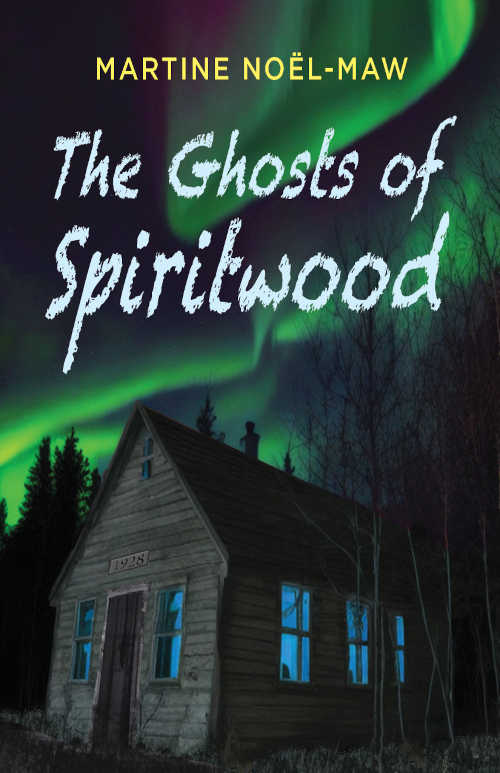“Guided solely by inspiration”: The two ways I write novels

This award-winning author reveals the ins and outs of the two different methods she uses to write her novels: one that’s systematic, and another that’s guided by inspiration and happens on the fly.
by Martine Noël-Maw
 People often ask me how I go about writing a novel. In my twenty-year career as a fiction writer, I have used two different approaches. The first one is systematic and involves a lot of planning, while the second one is pure inspiration, or improvisation.
People often ask me how I go about writing a novel. In my twenty-year career as a fiction writer, I have used two different approaches. The first one is systematic and involves a lot of planning, while the second one is pure inspiration, or improvisation.
The systematic approach is the one I used to write my award-winning mystery novel In the Fold of the Hills. I compare this approach to the production of a movie that encompasses three phases: pre-production, production, and post-production.
For me, the pre-production consists of doing research, developing the character bible, and mapping the plan, structure, or synopsis of the story. Planning is crucial to ensure the quality and consistency of the plot. In a mystery novel, it is important to reveal certain key elements at specific moments in the story, insert false leads and plot twists, and provide a satisfactory denouement. And one has to do all this without getting mixed up in dates or facts and, above all, without confusing the reader.
Books & Buzz Magazine is where writing pros spill their secrets! Subscribe now for free
The production stage was the moment when I sat down after three years of research and planning, and finally started writing. This was the most enjoyable stage for me. I wrote In the Fold of the Hills in five months, full time. Once I had the entire manuscript, I moved to the rewriting and revision stage, which I call post-production. This was a tricky phase because it involved scrutinizing the language and style, avoiding repetition, getting rid of adverbs, etc. Then I revised my manuscript in successive layers, applying different analysis grids, such as action, to make sure the action was logical and flowed well; checking the consistency of the character’s language, psychology, and so on.
I made myself available, and through Ethan’s voice the story came to me. It was as if I had tuned into a radio frequency and transcribed what I heard and saw.
It took me more than two years and fifteen versions to complete In the Folds of the Hills. At the end, the published version was thirty percent shorter than the first draft. That is to say that, in my practice, revising and tweaking a manuscript implies cuts and not additions. To write a novel one not only needs inspiration and motivation, but also patience. A lot of patience! It took six and a half years between the day I had the idea for the novel to the day I held the book in my hands.
The other approach entirely skips pre-production and is guided solely by inspiration. No research, no character bible, no plan. I go directly from idea to production. I used it to write about half of my novels. My young adult book The Ghosts of Spiritwood is one of them. I am truly in awe at the magic of this process. It is dizzying at times, but it works. I put five characters in a car on their way for a weekend to observe northern lights around Spiritwood, in northern Saskatchewan. All I knew was that they would not make it to their destination. The teenagers would end up stranded in the middle of nowhere and they would experience scary ghostly encounters.
Once I started writing The Ghosts of Spiritwood, I quickly adopted a first-person narration, something I had never done before. I made myself available, and through Ethan’s voice the story came to me. It was as if I had tuned into a radio frequency and transcribed what I heard and saw rather than assembling intellectual, fabricated material. It was like I was suspended in the void, building a bridge as I moved forward. It was as if the story already existed and I had only transcribed it. I wrote the entire manuscript in just ten weeks. And I didn’t reread a line until I finished the whole story. Within seven months, I had the book in my hands!
Of course, months of rewriting and editing followed. The original French-language version of the book, Les fantômes de Spiritwood, was published in 2010. It is still taught in schools, and I am always happy to discuss it with readers of all ages.
Whatever technique is used to create a novel, it is important to remember that we have to allow ourselves to write poorly in order to write well. Like any other craft, we can learn to do it better, but what counts is doing it.
Born and raised in Québec, Martine Noël-Maw has called Saskatchewan home since 1993. A French literature graduate from the Université de Montréal, she has authored sixteen books and a number of plays for both adults and youth. Her work has earned her many honors, including two Saskatchewan Book Awards and a SATAward. She was longlisted for the Prix de la nouvelle Radio-Canada (French CBC short story prize) and shortlisted for the Prix du récit Radio-Canada (French CBC non-fiction prize). Martine is also an editor, publisher, and translator. Find her online at her blog.